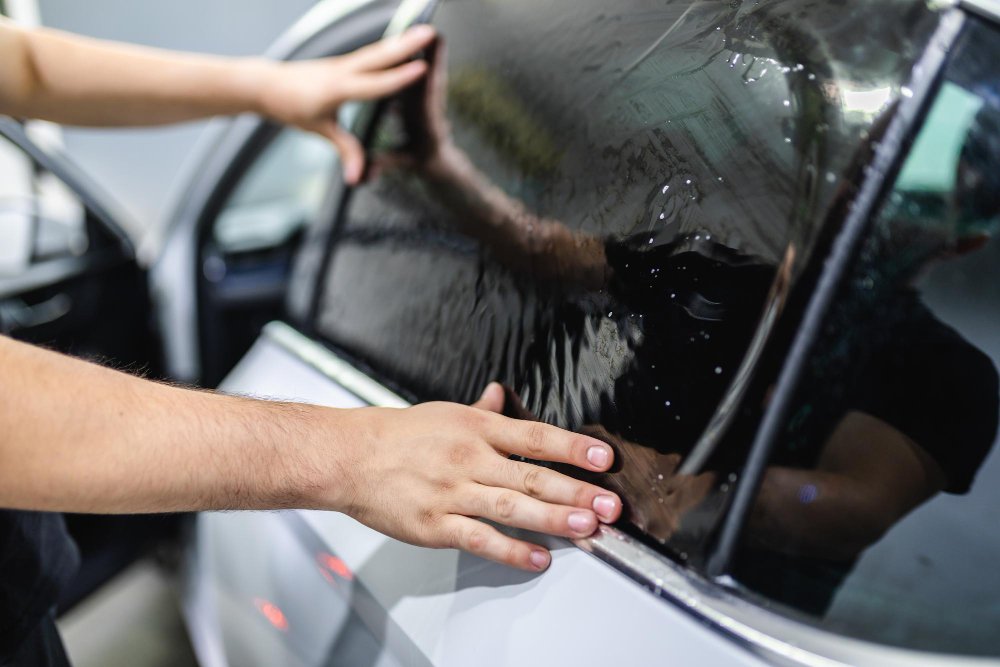The Reasons of Moro Auto Spa Window Tinting for Comfort
The Reasons of Moro Auto Spa Window Tinting for Comfort
Blog Article
Your Comprehensive Guide to DIY Home Window Tinting: Idea
Embarking on a Do it yourself window tinting job offers a chance to improve both the functionality and aesthetics of your room. Prior to getting started on this undertaking, it is crucial to navigate the complexities of regional tinting policies and pick an ideal film that aligns with your purposes.
Comprehending Home Window Tinting Regulations
Navigating the complex landscape of home window tinting regulations is important for any DIY fanatic seeking to boost their vehicle's appearances and convenience. Each state in the U.S. has particular regulations pertaining to the permitted levels of color on different windows, which can significantly impact your decision-making procedure.
Generally, these legislations determine the optimum allowable Noticeable Light Transmission (VLT) portion, which describes the amount of light that can go through the colored home windows. Some states allow only a particular percent of tint on the front windscreen, while enabling darker shades on rear home windows. Conformity with these guidelines is vital, as failure to adhere can lead to fines or the demand to get rid of the color entirely.
Additionally, there are often distinctions in between traveler lorries and industrial lorries, with various policies relating to each category. It's advisable to consult your local Division of Electric motor Autos or comparable authority to collect accurate info customized to your location. Comprehending these laws not just makes sure legal compliance however also boosts safety by maintaining exposure and avoiding possible threats while driving.
Selecting the Right Color Movie
Choosing the suitable color film is an important action in the do it yourself home window tinting process, as it straight affects both the look and capability of your vehicle's windows. A number of elements must lead your selection, including the sort of movie, its lawful compliance, and your wanted outcomes.
First, think about the various kinds of tint movies available: colored, metalized, ceramic, and crossbreed. Colored movies offer a basic degree of personal privacy and heat reduction but might fade over time. Metalized films use enhanced warmth being rejected and resilience but can hinder electronic signals. Ceramic movies, while extra costly, provide exceptional heat resistance and UV defense without signal disruption.
Following, make certain that the film follows regional guidelines worrying visible light transmission (VLT) portions. Compliance with these regulations is crucial to stay clear of fines and make sure safety and security.
Necessary Tools for DIY Tinting
Having actually chosen the right color film for your home windows, the following step entails collecting the necessary tools to make certain a successful installment. The key tools you will certainly need include an utility knife or a razor blade, which is crucial for cutting the tint movie to the wanted dimension. A squeegee is additionally vital, as it helps get rid of air web bubbles and ravel the movie during application.

Furthermore, think about utilizing a heat weapon or hairdryer, as this my latest blog post can assist mold the color movie to the shapes of the window and help with adherence. Lastly, gloves are suggested to prevent fingerprints on the movie throughout installment. By gathering these crucial tools, you will certainly be well-prepared to tackle your do it yourself window tinting job effectively.
Step-by-Step Application Refine
Begin by completely cleaning the window surface area to guarantee optimum bond of the tint film. Once the window is tidy, determine the tint film versus the home window, permitting for a slight overlap on all sides.
Gently spray the home window surface and the adhesive side of the film. Thoroughly straighten the film with the top of the window, ensuring it is right. Use a squeegee to smooth the film, applying firm, also pressure.
Allow the tint to cure for at least 24 hours without rolling down the windows. Adhere to these steps diligently for optimum outcomes in your DIY window tinting project.
Upkeep and Care Tips

It's recommended to wait at the very least a week after setup before cleaning your windows to allow the sticky to fully heal. Throughout this first period, prevent rolling down the home windows to avoid any kind of damage to click this site the tint.
Routine upkeep involves checking the edges of the tint for any kind of indications of gurgling or lifting. If you discover any type of issues, it's ideal to resolve them quickly to avoid further deterioration. In addition, be cautious with using window therapies, such as tones or drapes, as they can create warmth that might endanger the color with time.
Conclusion
In final thought, carrying out a do it yourself home window tinting project requires careful factor to consider of local laws, selection of proper color movies, and the use of important tools. A systematic application procedure guarantees optimal results, while normal upkeep contributes to the durability of the color - Moro Auto Spa Window Tinting. By adhering to these guidelines, individuals can accomplish both aesthetic enhancement and enhanced privacy in their spaces, making DIY home window tinting a beneficial venture
Report this page